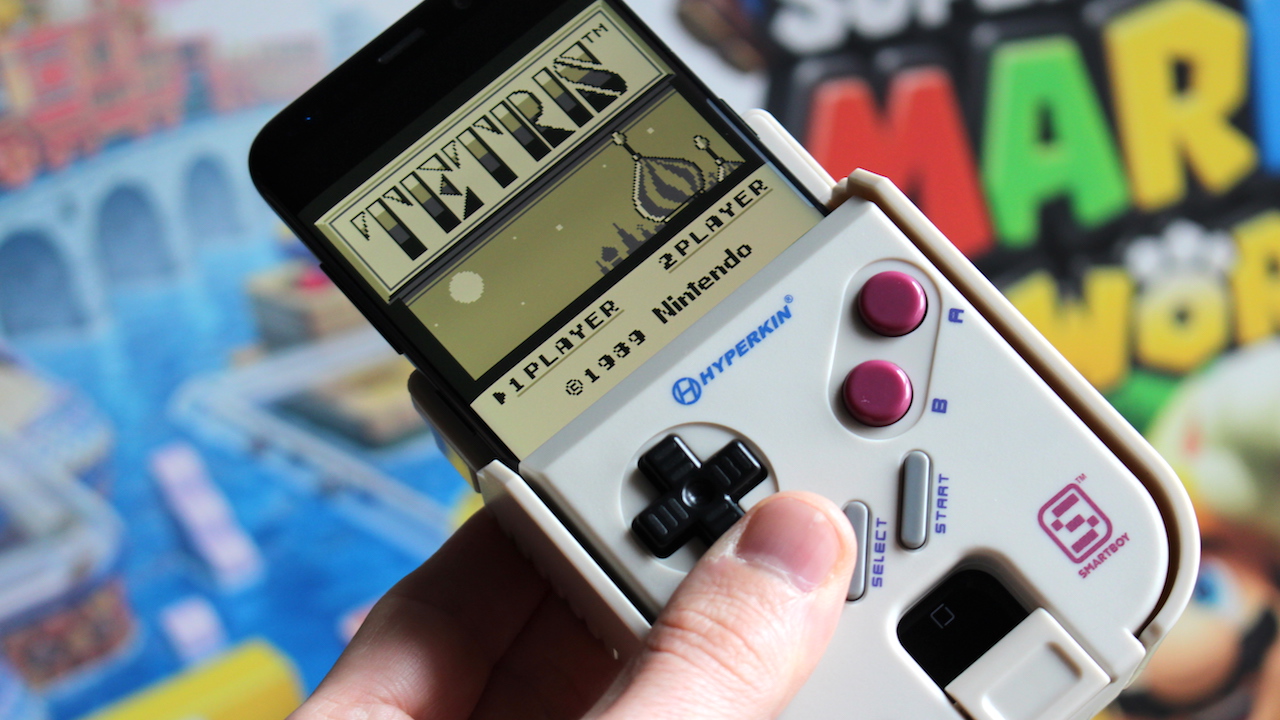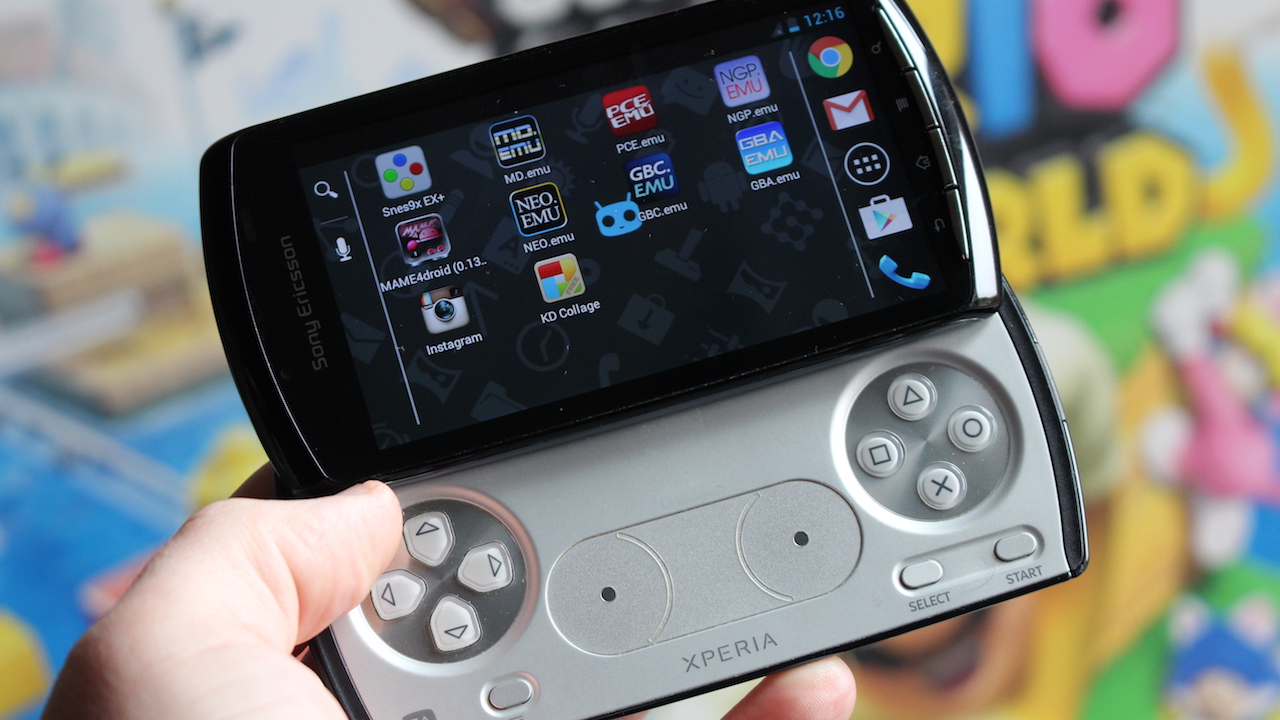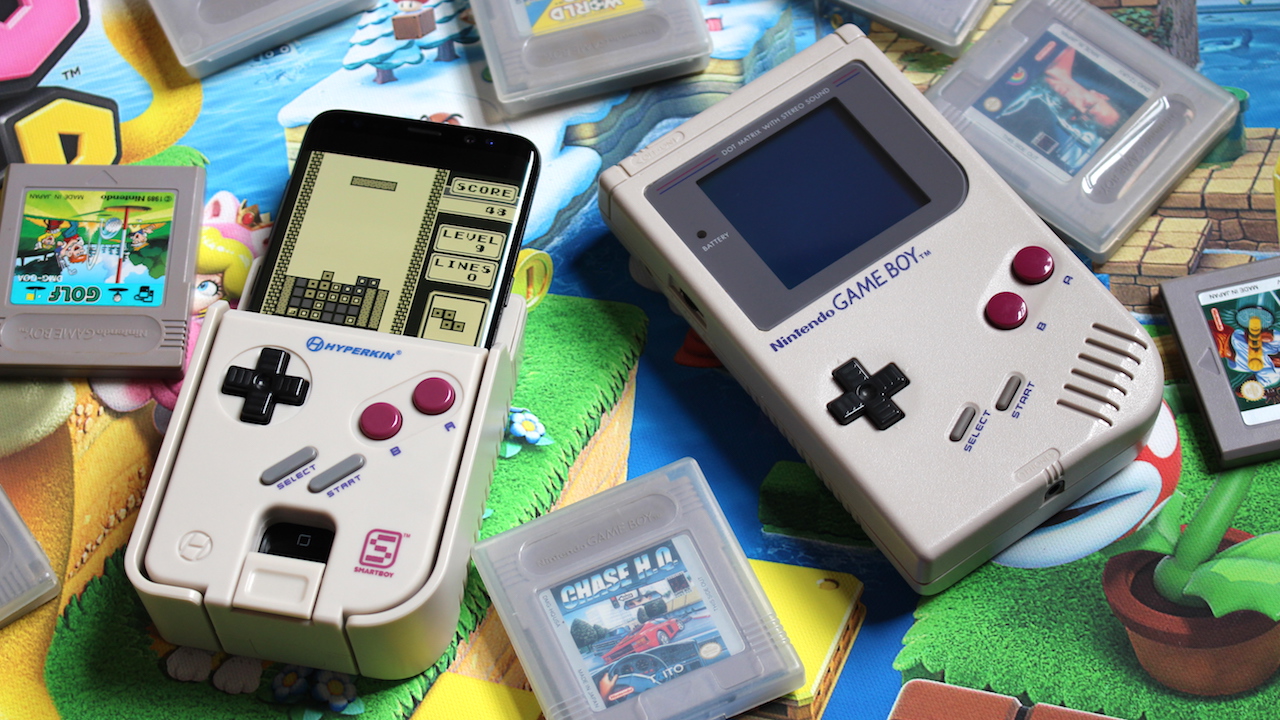Hyperkin's SmartBoy makes me long for a proper gaming phone

The arrival of the iPhone in 2008 didn't just change the way we view mobile technology, it started the gradual shift from physical buttons to touch-based interfaces.
In the early years of the resultant smartphone war, many Android handset makers turned to physical inputs to offer some kind of advantage over Apple's line of phones – Motorola's Droid series had slide-out QWERTY keyboards, for example, while Sony Ericsson's Xperia Play was pitched as a console / phone hybrid, complete with ports of 32-bit PlayStation games – but these were very much the exception to the norm; the consumers had spoken, and buttons were on the way out.
Fast-forward to the present, and outside of RIM's Android-based Blackberry line, the world of smartphones has largely turned its back on physical buttons. As screen sizes become ever larger, there's simply no room for keys on the front of your typical smartphone (with the Galaxy S8, there's not even space for the famous Home button, which has been unceremoniously relegated to the rear of the device), and the obsession with making handsets as svelte as possible means that bulky sliding keyboards are also becoming a rarity.

The Xperia Play's wasted potential
For me, the lack of a physical interface has always been the biggest issue with playing games on a smartphone. I was one of the ardent fans of the Xperia Play, which – for all its faults – was my dream handset. Despite being saddled with a single-core chipset when the rest of the Android world was switching to dual-core, being able to play emulated classics like Sonic, Streets of Rage 2, Secret of Mana and The Legend of Zelda on the move made it utterly essential in my eyes, and because my phone was always in my pocket, my next gaming session was never far away – whereas with a traditional games console, I'd have to remember to bring it along with me in order to play.
Despite this, the phone was a flop, with some retailers suggesting at the time that the fact that it looked like a games console was off-putting for "serious" smartphone users. Whatever the reason for its dismal commercial performance, the failure of the Xperia Play hit me hard; I would have loved to have seen a second-generation model, and even to this day I'd gladly drop my iPhone 7 for a handset which offered built-in physical gaming controls.

Enter the SmartBoy
It's the fact that the smartphone sector has so resolutely dismissed buttons that makes the Hyperkin SmartBoy such a compelling device. In case you haven't heard of it, the SmartBoy actually began life as an April Fool's joke, yet it gained such a positive reaction that Hyperkin was convinced to fully develop the unit into a commercial product. After two years of work, the company is finally releasing the consumer version of the device – and I've been lucky enough to have one for the past few weeks.
As the name suggests, the SmartBoy is focused solely on running original Game Boy and Game Boy Color games on your smartphone – in this case, it's an Samsung Galaxy S8. The device is part of Samsung's approved accessory programme, and should work with future Samsung handsets, too. Once you've installed the official companion application you can simply insert your dusty old copy of Tetris (or whatever Game Boy title takes your fancy) and play it on your Galaxy S8's gorgeous, pin-sharp screen. It's the ultimate mix of old and new; the SmartBoy bolts onto your phone quickly and easily, making it the ideal companion for those long trips to work.
Sign up for breaking news, reviews, opinion, top tech deals, and more.

What really struck me about using the SmartBoy for a prolonged period of time is how much I miss the feel of proper, physical buttons when gaming on my phone. The gloriously tactile D-Pad and buttons are modelled on the original interface seen on the 1989 Game Boy DMC-01, and Hyperkin has absolutely nailed the nostalgia side of things – those of you old enough to recall using the original "brick" Game Boy will be right at home here.
Outside of rose-tinted memories, that responsive 8-way pad and those big, welcoming buttons give you a connection with the game which is instant and definitive – something which sadly cannot be said for a lot of touchscreen gaming interfaces, which rely on virtual buttons that can't dream of delivering the same tactile feedback.

The only real downside to the SmartBoy is the fact that it's an add-on device you've got to carry around with you, and it increases the size of the Galaxy S8 to the point where you may as well have a proper Game Boy in your bag.
Alas, it's likely to be this way forevermore as the smartphone industry has ended its brief and rather unsuccessful dalliance with gaming controls after a few failed attempts.
Our touch future
For many players, gaming on phones is all about touch, and that's not necessarily a bad thing; the most popular games are ones which exploit the intuitive nature of touchscreens the most effectively, and there's certainly a valid argument for stating that "traditional" gaming controls – such as joypads and buttons – are needlessly intimidating to "casual" players.
By removing this barrier, smartphones have opened up the hobby to millions of people who wouldn't be seen dead with a joystick in their hand, and that's a positive thing overall.

Still, I hope I'm not alone in wishing for a revival of the Sony Ericsson's Xperia Play concept. Not so long ago there were (perhaps optimistic) rumours that Nintendo might be considering a move into the smartphone sector with its own device, and it goes without saying that I'd be the first in line for such a handset, assuming the veteran company could find some means of elegantly including gaming controls, of course.
Until that time comes – if it ever comes at all – accessories like the SmartBoy will always find favour in my household. For me, gaming isn't truly gaming unless someone's got a physical button to push – but that probably makes me part of a dying breed.
You can pre-order the SmartBoy from Funstock.co.uk. Thanks to MobileFun.co.uk for providing the Samsung Galaxy S8 used in this feature.